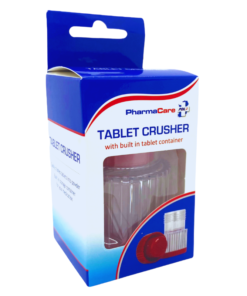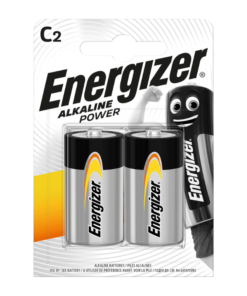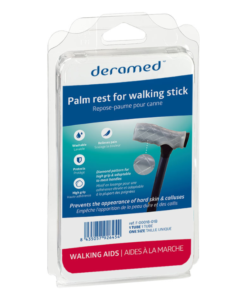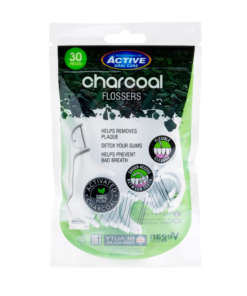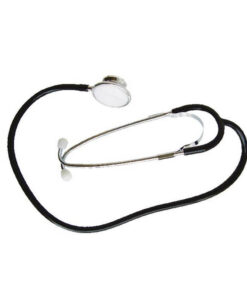Description
Description
The Geratherm Urine Test is a rapid test for home use for the early detection of urinary tract infections and cystitis. The test strip consists of 4 test fields that display a colour change if leukocytes, protein, nitrite or blood is detected in the urine. The test has an easy-to-read colour chart and is easy to use, while also displaying results in approximately 2 minutes. This test can be done at any time of the day, but an early-morning urine sample is recommended.
Pack Size: 3 Pack.
Reagents and Detection:
| Reagent | Test Duration | Composition | Characteristics |
| Leukocytes (LEU) | 2 minutes | Amino acid ester pyrazole derivative, diazonium salt, buffer solution, non-reactive ingredients. | Detects leukocytes from levels of 9 – 1w5 white corpuscles Leu/mL in urine. |
| Blood (BLO) | 1 minute | 3,3’,5,5’-tetramethylbenzidine (TMB), diisopropylbenzole dihydroperoxide, buffer solution, non-reactive ingredients. | Detects haemoglobin from levels of 0.018 – 0.060 mg/dl or 5 – 10 Ery/L in urine samples with an ascorbic acid content of |
| Nitrile (NIT) | 1 minute | P-Arsanilic acid,N-1(1-naphtyl)-ethylenediamine, non-reactive ingredients. | Detects sodium nitrite from levels of 0.05 – 0.1 mg/dl in urine with low density and less than 30 mg/dl ascorbic acid. |
| Protein (PRO) | 1 minute | Tetrabromphenol blue, buffer solution, non-reactive ingredients. | Detects protein from 7.5 – 15 mg/dl (0.75 – 0.5 g/L). |
Uses
The Geratherm Urine Test is used for the early detection of urinary tract infections and cystitis. The test consists of a test strip with 4 reaction fields that quickly check for the following parameters – leukocytes, nitrite, blood and protein in the urine.
Application
• Before testing ensure that the test strip and the urine sample are at room temperature (15 – 30 °C)
• It is best to use the first urine sample in the morning of the morning and to take the sample midstream
• Please take the necessary hygiene measures before conducting the test
• Do not remove the test strip from the aluminium pouch until just before use, and grasp it as far away from the reaction fields as possible
• Do not hold the test strip in the urine stream until it has been flowing for 1-2 seconds
• Ensure that all the reaction fields are thoroughly immersed in the urine
• In this case, dip the reaction fields completely in the urine and remove the test strip again immediately in order to prevent the reagents dissolving
• When removing the strip from the container, carefully wipe it on the edge of the container to remove excess urine
• Hold the test strip horizontal and lay it on a piece of absorbent tissue (e.g. a paper handkerchief) in order to prevent the chemical substances on the reaction fields and/or dirty hands coming into contact with the urine
• Carefully compare the reaction fields with the corresponding colour bars on the colour chart
• To do this, hold the test strip next to the colour bars
Test principle and Expected Values:
Leukocytes: This test can be used to detect the presence of granulocyte esterases. The esterases break down a derivatised pyrazole amino acid ester, thus releasing hydroxy-pyrazole. This pyrazole reacts with a diazonium salt and produces colours ranging from pinkish beige to violet. Normal urine samples generally provide negative test results. If traces of leukocytes are present, this raises questions as to their clinical significance. If leukocytes are detected, we recommend that the test be repeated using a fresh urine sample from the same patient.
Blood: This test is based on the pseudo-peroxidative activity of haemoglobin, which catalyses the reaction between diisopropylbenzole and 3,3‘,5,5‘ tetramethylbenzidine. This results in changes of colour ranging from orange through green to dark blue. Every green or greenish spot that appears in the reaction field within one minute is significant; the urine sample should be investigated more closely. In the case of menstruating women, blood is often, but not always, found in the urine. The significance of the detection of minor traces of blood in the urine varies from patient to patient, so that these samples need to be clinically investigated.
Nitrite: This test is based on the conversion of nitrate into nitrite owing to the presence of gram-negative bacteria in the urine. In an acidic environment the nitrite in the urine reacts with P-arsanilic acid to produce a diazonium compound. This compound then combines with 1 N-(1-naphthyl)-ethylene- diamine and produces pink coloration. Nitrite is not detectable in normal urine.1 With certain infections the nitrite field is positive, depending on how long the urine was held in the bladder before testing. Only 40 % of positive cases are detected by means of the nitrite test if the urine was only incubated in the bladder for a short period; however, the detection rate rises to 80 % if the urine was in the bladder for longer than 4 hours.
Protein: This reaction is based on a phenomenon known as the “protein error” of pH indicators; a highly buffered indicator changes its colour in the presence of proteins (anions) as a result of the indicator releasing hydrogen ions into the protein. When the pH value is constant, any green colour is due to the presence of protein. The coloration ranges from yellow to yellowish green in the case of negative results and from green to greenish blue in the case of positive results. 1 – 14 mg/dl protein can be excreted by healthy kidneys. Any coloration of the test field that is more intensive than the reference field is a clear indication of proteinuria. If urine has a high density, the colour on the test field may match that on the colour chart even with normal protein concentrations. Medical advice should be sought in order to evaluate the significance of traces of protein.



